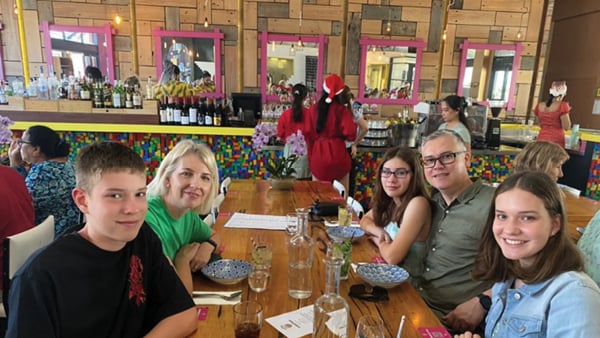Let's delve into the recent shutdowns at Kings Valley in February and Eliwana in March, each offering its own unique set of experiences.
Kings Valley February Shutdown
Heavy lift Kings Valley Project Coordinator Sean Noyes painted a picture of relative smooth sailing during their February shutdown.
"In Kings Valley, our February shutdown went according to our typical protocol," Sean said.
Despite a hiccup regarding the unavailability of chutes for Screen 404 assembly, the team persevered, completing crucial tasks such as CRC304 rebuilds and belt feeder replacements.
What stood out in Kings Valley's shutdown was the adeptness in post-shutdown operations.
"The team executed the post shut really well and packed up and de-mobed all rotables prior to the shut finishing," Sean said.
The team onsite also rolled out the hands-off rigging toolboxes which challenges the norms of rigging practice. This initiative mandates the use of rigging aids such as taglines, poles and other tools unless it has been pre-approved by the site leadership and management team.

Eliwana March Shutdown
The March shutdown at Eliwana, encountered remarkable achievements as well as a mixed safety performance.
Heavy lift Project Coordinator Brad Matyas congratulated his team on the overall work.
"We assisted in completing SN331 screen and underflow chutes, these chutes had never been changed before and the information given on weights and sizes were questionable," Brad said.
Despite these uncertainties, the crew, along with the leadership team, demonstrated commendable adaptability and resilience.
"The laydown for these works around the crane was very tight as all chutes coming out had to be transported straight away and the new chutes transported in when needed, this required constant forward planning from the supervisor to ensure we never delayed works waiting for transport," he said.
Another noteworthy accomplishment was the completion of both the Apron feeder change out and primary crushing in a single shutdown.
"Due to laydown size issues these were usually completed in separate shutdowns, but with the catch crane and extra float we were able to transport the new and old equipment as required," he said.
Brad also highlighted three safety incidents, all of which were deemed avoidable, underscoring lapses in safety protocols and rigging practices.
Despite these challenges, Brad commended the culture of transparency within the team.
"We did have a great culture of our teams speaking up if they were unsure of something," Brad said.
"The two high risk areas were our 450s which were critical path tasks that we had zero incidents on."
Furthermore, the client's recognition of their efforts and proactive approach to streamlining works served as a testament to their commitment to improvement.
"Aside from the incidents the shutdown was executed well. Client had a lot of praise for our efforts and our culture of always looking to streamline works by planning shifts ahead for the material movements," he said.







Leave a comment